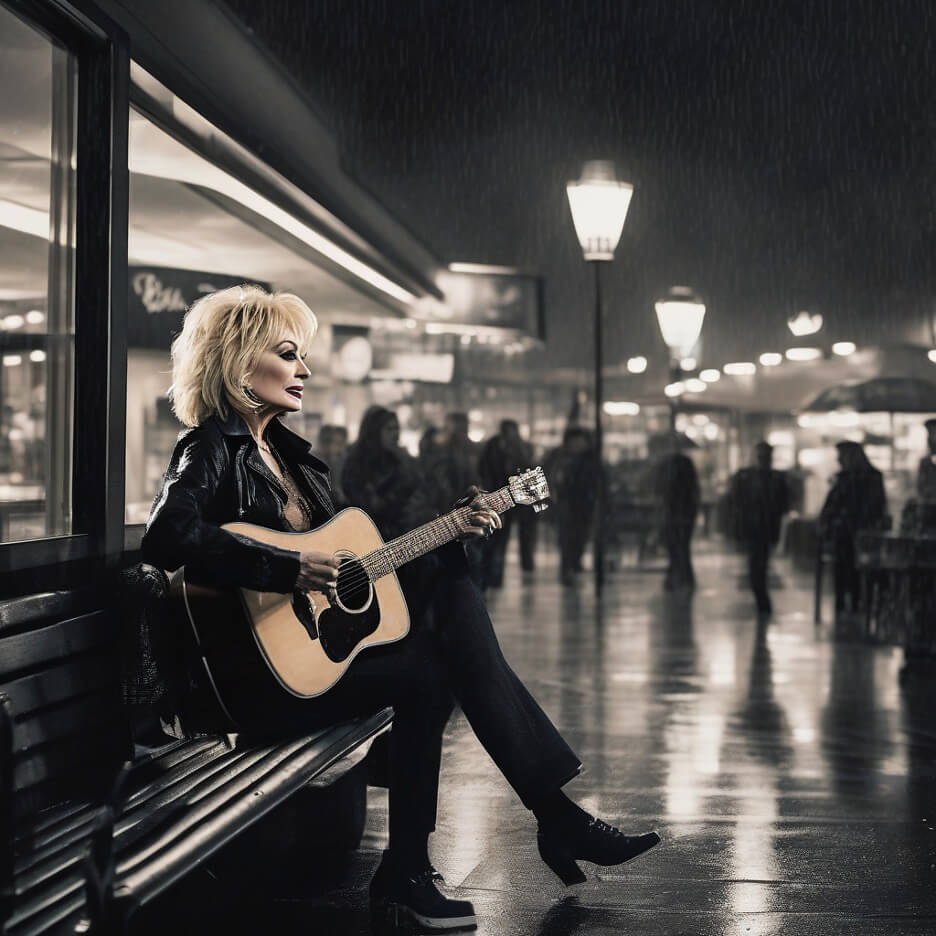No. Creativity is involved in almost everything humans do. Now that we have the answer out of the way let’s discuss it.
A design colleague of mine just inspired me to address this question that has been niggling at me for some time. We were casually discussing my latest AI-generated image experiment where I was generating images based on prompts inspired by vivid dreams I had about Dolly Parton. (see image below). As she walked by my desk to get some coffee, she congratulated me on playing around with my creative side, astutely pointing out that “you UX research folks don’t often get to be creative.”
I’d just been experimenting at my desk with different AI tools, trying them out, generating images with progressively refined prompts, learning how to integrate AI into my UX workflow, and then sharing with the rest of the UX team for fun discussions.
She was referring to the fact that in a mature, ‘experience first’ research and design consultancy like ours, artistic creativity tends to be concentrated in the later phases of the design process after the rigour of user research and testing has prepared the ground for effective visual design components to be integrated into the product.
One would assume that researchers focus on research while designers focus on design. Yet, this is more of a practical effect of working through tight project schedules than an ideal UX scenario.
Researchers face the unfair stereotype of being rigid, focused, data-driven number-crunchers who abhor the creative vicissitudes of the ‘artsy’ designer types. In reality, most UXers, whether design or research-trained, should have a broad range of skills and experiences that allow them to flow naturally between the various phases of digital product design.
The most pronounced overlap between research and design creativity happens during the IA and wireframing process. During this time, all the insights and conclusions generated by the user research culminate in a flurry of creativity and collaboration involving research and design skills.
UX teams composed of people with different skill sets and backgrounds are best positioned to leverage artistic and research creativity. For individual contributors, this is the goal, and though it takes years of practice and experience, it is well worth it.
A balance of skills between the artistic and research fields is best achieved through teamwork, collaboration, and constructive feedback from guiding mentorship.
What is Creativity?
If we limit our definition of creativity to the artistic sense, as my colleague implied in our discussion this morning, then yes, as a researcher, I don’t get to exercise that side of my brain quite as often as I would like. Yet impactful UX research is impossible to achieve without creativity.
First, researchers must be imaginative, original, and clever with their ideas when coming up with creative research questions that will address the challenges our users face.
A creative approach must be followed when designing an innovative research methodology that answers the research question and accounts for the practical considerations of working with people under tight deadlines in sometimes challenging environments (online or offline). This can be much more challenging than expected.
Second, we need to use original or out-of-the-box analysis frameworks to make sense of reams of qualitative data from countless hours of interview transcripts, survey data from thousands of participants, and usability test analytics.
I recall a former colleague’s inventiveness when, instead of centring the persona to analyze the pain points of using a hydro bill, she turned the UX standard on its head by centring the bill’s ‘lifecycle’ from inception to resolution, effectively resolving the problem we were facing of trying to document too many personas individually.
Finally, I would argue that the insights we generate are the most valuable form of creativity we use to make our research impactful for the organizations we consult. Research insights are the creative interpretation of patterns of qualitative data that would be meaningless without the researcher’s creative skills and experiential lens.
What are your thoughts and experiences with using creativity in your UX research?
By the way, the colleague who inspired me to write this blog post modified her original assumption that “researchers don’t get to be creative” to “researchers don’t get to be AS visually creative as the visual design team.”
—
Jessika uses her qualitative research skills to provide nuanced human insights into user experiences. She has most recently applied these skills for university and government projects at the Innovation Hub and the Department of Justice Canada.
Jessika is well versed in ethnographic methods, interviews, surveys, data analysis, and research design, and has years of experience conducting research in various cultural settings such as East Africa and Southeast Asia.
Jessika has a Doctorate in Anthropology from the University of Toronto
